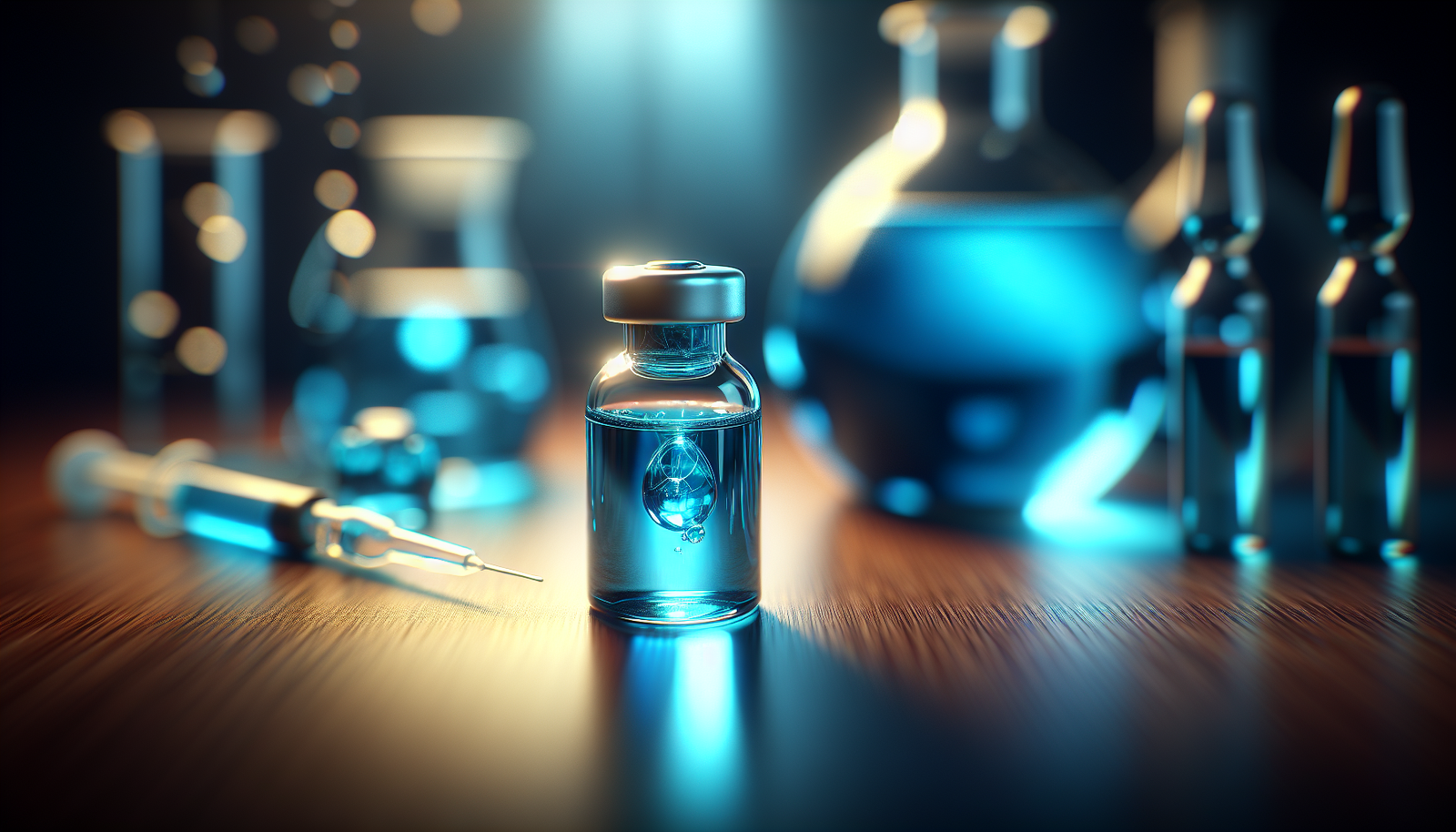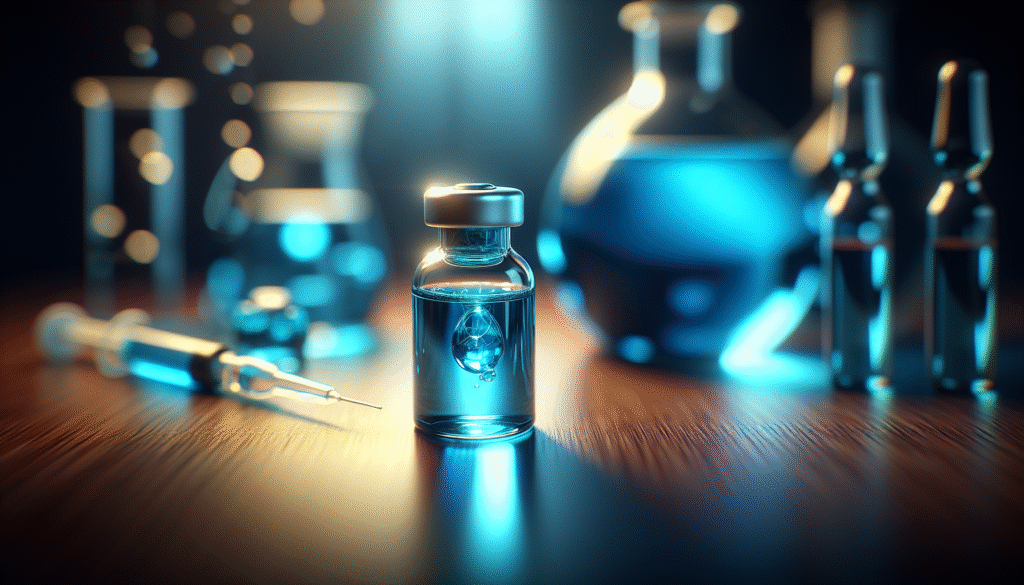
What do you know about methylene blue? You might have heard fascinating claims about this compound, many of which teeter on the edge of scientific fact and myth. Methylene blue, a synthetic dye originally developed for use in textiles and later adopted in the medical field, has garnered significant attention in recent years due to its reported therapeutic benefits. However, not all the information circulating in the public domain is accurate. In this article, we will systematically debunk some of the most popular myths associated with methylene blue.

The Origins of Methylene Blue
Methylene blue’s history is both intriguing and essential to understanding its applications today. Created in the late 19th century, this compound initially served as a dye for fabrics. Its medical potential was quickly recognized, leading to applications ranging from treating malaria to acting as a staining agent in laboratories.
The Chemical Structure
At its core, methylene blue is a phenothiazine derivative. Its molecular formula is C16H18ClN3S, which allows it to absorb light, enabling its use in various medical and scientific applications. Understanding its chemical structure helps ground the subsequent discussions about its benefits and misconceptions.
Myth 1: Methylene Blue is a Modern Discovery
Many people believe that the therapeutic use of methylene blue is a contemporary innovation. In truth, this compound has been utilized for over a century in various capacities. Initially recognized for its ability to treat malaria in the early 1900s, methylene blue has a well-documented history in medicine.
Historical Significance
During World War I, methylene blue was employed to counteract the effects of cyanide poisoning. This is a testament to its significance in life-saving scenarios long before modern pharmacology began exploring off-label uses.
Myth 2: Methylene Blue is Only Useful for Treating Diseases
Another pervasive myth is that methylene blue’s only function is to treat specific diseases. While it has applications in addressing conditions like methemoglobinemia and infections, it also has promising neuroprotective effects and anti-aging properties.
Broader Applications
Recent studies suggest that methylene blue may improve mitochondrial function, enhance cognitive abilities, and even offer protective effects against neurodegenerative diseases. These broader applications make it more than a mere treatment tool but rather a compound that can enhance overall health.
Myth 3: Methylene Blue Causes Toxicity at Any Dosage
There exists a belief that methylene blue can be toxic and dangerous regardless of dosage. While any substance can be harmful when misused, methylene blue has a well-established safety profile when administered correctly.
Understanding Dosage
In therapeutic settings, doses typically range from 1 to 2 mg per kilogram of body weight, and serious side effects are rare. Consulting with a healthcare professional before use ensures safety, as individual reactions may vary based on unique health conditions.
| Dosage Type | Recommended Dosage |
|---|---|
| Adults | 1 to 2 mg/kg body weight |
| Children | Consult a pediatrician |
| Long-term Use | Monitor regularly with a doctor |

Myth 4: Methylene Blue is an Unregulated Substance
Some individuals believe that methylene blue’s popularity in alternative and holistic medicine means it is entirely unregulated. In reality, its use and distribution fall under various regulatory agencies, ensuring it meets specific safety and efficacy standards.
Regulation and Approval
In the United States, the Food and Drug Administration (FDA) approves methylene blue for specific medical conditions while also allowing research into its broader applications. Furthermore, in many countries, it is classified as a prescription only drug, underscoring its regulated status.
Myth 5: Any Form of Methylene Blue is Safe
It’s crucial to discern that not all forms of methylene blue are created equal. While pharmaceutical-grade methylene blue is generally safe, some industrial-grade variants contain impurities that can pose health risks.
Quality Matters
When considering methylene blue for any use, it’s vital to pursue pharmaceutical-grade products. These products undergo rigorous testing to ensure their purity and safety. Purchasing from reputable suppliers minimizes the risk associated with consumption.
Myth 6: Methylene Blue is a Miracle Cure-All
There’s a tendency to overstate the benefits of methylene blue, labeling it a miracle cure. While it certainly has potential therapeutic effects, labeling it as a universal remedy downplays the complexity of human health.
The Realities of Treatment
Methylene blue may aid in specific health conditions, but it’s essential to approach its use with realistic expectations. Combining it with a balanced diet, regular exercise, and other health-promoting practices ensures a holistic approach to wellness.
Myth 7: Methylene Blue is a Novel Antioxidant
Some studies suggest that methylene blue exhibits antioxidant properties, leading to claims that it could be a novel antioxidant supplement. While this potential exists, it’s crucial to understand that its antioxidant capabilities are not fully established.
The Science Behind Antioxidants
Methylene blue may help mitigate oxidative stress at the cellular level, but more research is required to draw definitive conclusions about its efficacy compared to well-known antioxidants like vitamin C or E.
Myth 8: Methylene Blue Interferes with Other Medications
There is a misconception that methylene blue can interfere with all medications, leading to dangerous interactions. While some interactions may exist, they are not universal and can be effectively managed with proper medical guidance.
Safety Precautions
Avoiding interactions starts with open communication with healthcare providers. Providing a complete list of all medications and supplements being taken allows for a better assessment of any potential interactions, ensuring safe use of methylene blue.
| Medication Type | Potential Interaction |
|---|---|
| Selective serotonin reuptake inhibitors (SSRIs) | Can induce serotonin syndrome |
| Dopamine antagonists | May counteract effects |
| Antidepressants | Requires monitoring |
Myth 9: Methylene Blue has an Instant Effect
Patients often anticipate immediate results upon taking methylene blue, which can lead to disappointment and skepticism. Understanding that its effects may take time to manifest is crucial to managing expectations.
Timeframe for Results
Depending on the condition being treated, some users may experience benefits in hours, while others may take days or weeks to notice a change. A prompt discussion with a healthcare provider can provide guidance tailored to your specific health journey.
Myth 10: Methylene Blue Usage is Risk-Free
Lastly, the notion that methylene blue is entirely risk-free can lead to dangerous oversights. Any compound, no matter how beneficial, has the potential for side effects or contraindications.
Being Aware of Risks
Common side effects of methylene blue can include dizziness, nausea, and discoloration of urine or skin. While serious adverse reactions are uncommon, it remains essential to stay informed and cautious.
| Common Side Effects | Frequency |
|---|---|
| Dizziness | Occurs in a minority of users |
| Nausea | Rare |
| Urine/Skin Discoloration | Normal at therapeutic dosage |
Conclusion
In reviewing these pervasive myths surrounding methylene blue, it becomes evident that understanding this compound is essential for anyone considering its use. Methylene blue possesses a storied past and offers various potential benefits, but it is imperative to approach it with an informed perspective. Consulting a healthcare provider can help you navigate its intricacies, ensuring that its application aligns with your health needs.
With the truth revealed, you can now arm yourself with the right knowledge to make informed decisions about methylene blue, steering clear of misconceptions that might otherwise cloud your judgment. As the conversation continues to evolve around this fascinating compound, staying abreast of scientific advancements will empower you to unlock the real potential that methylene blue has to offer.